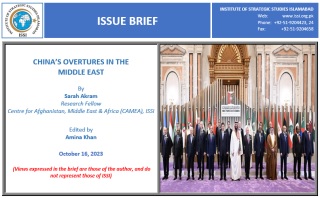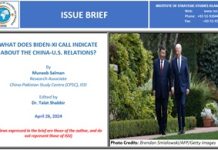In the past decade, China’s engagement with the Middle Eastern countries has been growing; a most recent example is Beijing’s role in Saudi-Iranian rapprochement in March 2023. The recent visit of Syria’s President Bashar Al Assad to Beijing in September 2023 further signifies China’s deepening engagement with the region. China’s growing influence can be likely viewed as a challenge for the United States. This increased engagement is illustrative of China’s inroads into the Middle East and may have come amidst a perceived vacuum resulting from reduced U.S. involvement.
The most recent Hamas-Israel war is unlikely to deter Beijing, and China is expected to continue its efforts to act as a peace-broker in the region. China has expressed profound concern regarding the increased hostilities between Israel and the Palestinians and China’s Special Envoy is expected to travel to the region shortly. The extent of U.S. engagement could likely lead to two potential outcomes: either affording China more room for influence as Washington diverts its attention to another military conflict; or enabling the U.S. to re-assert its predominant role while China remains in a secondary place.
China has registered steady progress in making inroads into the region through significant investments, with a special focus on sectors such as energy, infrastructure, and construction. China’s economic ties with the Middle East continue to grow, as bilateral trade is also increasing as evident in the trade volumes with the Kingdom of Saudi Arabia and the United Arab Emirates. China’s energy needs are a major driver; China imports over half of its oil, and the Middle East is its largest supplier.[1]















